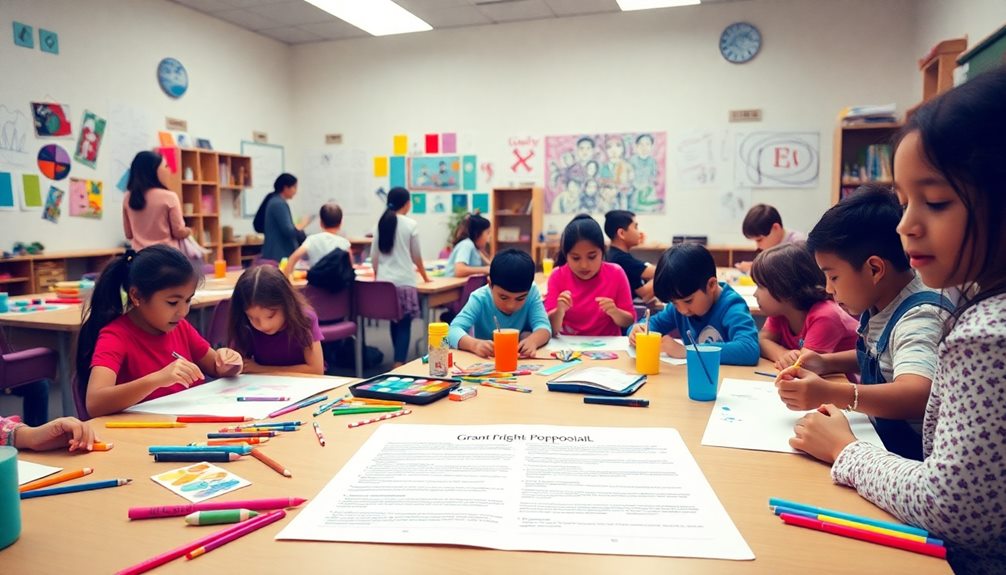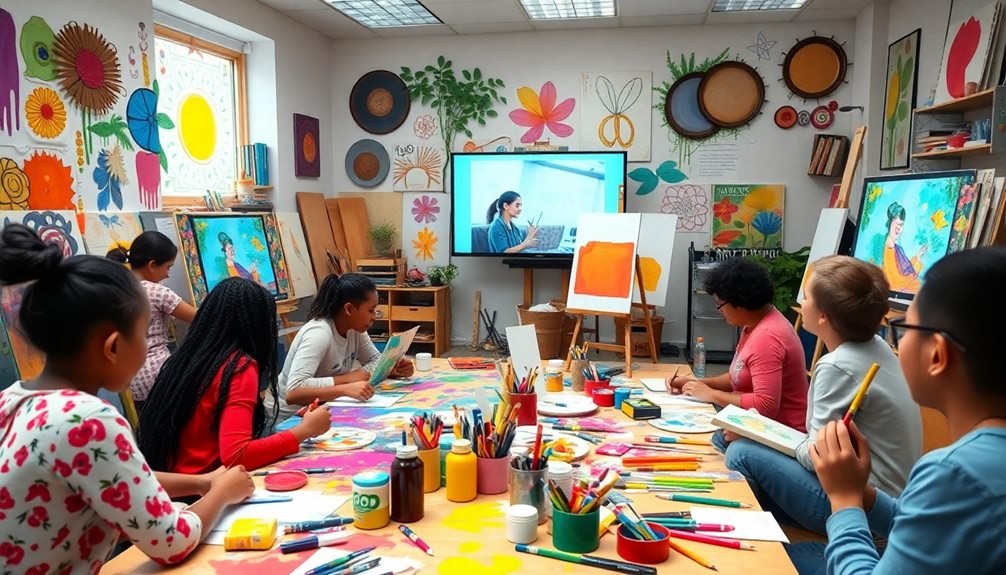Grant writing for art education is essential for securing funding that supports engaging and impactful programs. You'll need to craft a strong application, focusing on clear project descriptions and detailed budgets. Communicating effectively is key, so avoid jargon and use concise language. Collaborating with community partners can enhance your proposal's appeal. Keep an eye on deadlines and organize your submissions well in advance. Remember, rejections aren't setbacks; they offer valuable lessons for improving your approach. By understanding what funders seek, you can boost your chances of success. Discover more about strategies that can elevate your applications.
Key Takeaways
- Effective grant writing secures funding for art education programs, enhancing student engagement and community collaboration.
- A strong application includes a clear project description, detailed budget, timelines, and supporting materials such as artist resumes.
- Use clear language and storytelling techniques to illustrate project significance and maintain focus on funders' missions.
- Building relationships with funders through networking and communication fosters support and improves application success rates.
- Learn from rejections by analyzing feedback, refining proposals, and maintaining persistence to enhance future applications.
Importance of Grant Writing

Grant writing plays an essential role in art education, providing vital funding that supports various programs and resources designed to enhance students' learning experiences. By securing grants from funding bodies like government agencies, foundations, and corporations, you can guarantee your art programs thrive, even when budget cuts loom. These financial resources greatly increase access to arts education, positively impacting student engagement and achievement.
Effective grant writing isn't just about securing funds; it fosters collaboration and community engagement as well. When you craft a grant proposal, you're often connecting your institution with local artists and organizations, creating enriching opportunities for students. These partnerships can lead to workshops, mentorships, and other experiences that deepen students' understanding of the arts.
Moreover, the skills you develop through grant writing, such as clear communication and project planning, are invaluable for anyone pursuing a career in the arts or related fields. You'll learn to articulate your vision, set achievable goals, and manage resources effectively.
Ultimately, mastering grant writing empowers you to advocate for the importance of arts education and guarantees that students have access to the enriching experiences they deserve.
Components of a Strong Application
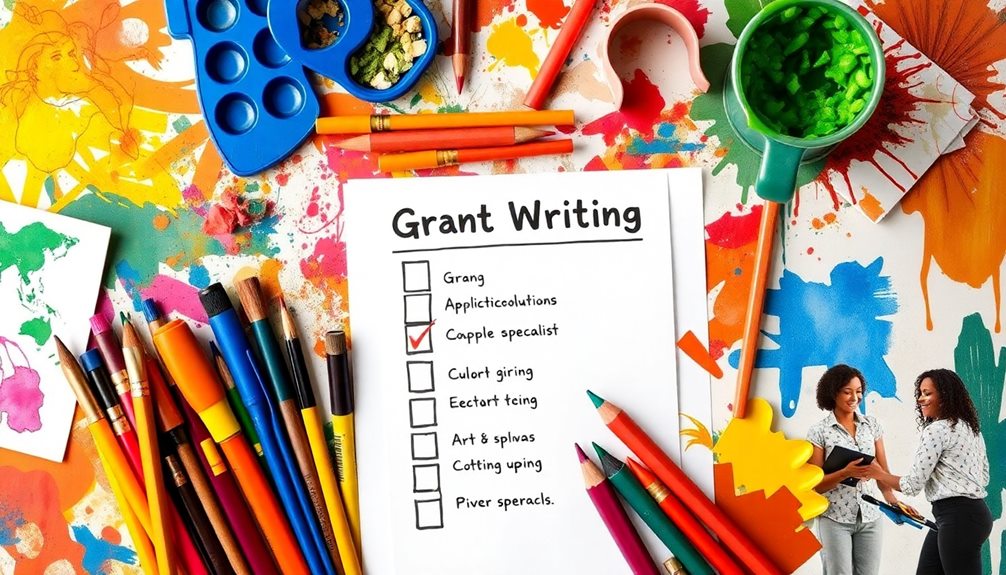
A strong application is like a well-crafted story that captures the funder's attention and clearly communicates the project's vision. To achieve this, you'll need to focus on several essential components.
Start with a compelling project description that outlines your objectives and the significance of your work. Funders want to see how your project aligns with their priorities and the community impact it will have.
Next, include a detailed budget that justifies your expenses. This shows that you've thought carefully about your project's financial needs and are committed to managing resources responsibly. Clear timelines for project completion are also critical, demonstrating that you have a solid plan in place.
Don't forget to include supporting materials like an artist's resume and examples of past work. These elements strengthen your application by showcasing your qualifications and expertise.
Finally, guarantee thorough proofreading and review of your grant proposals. Having fresh perspectives can help catch any errors and improve clarity, coherence, and adherence to submission requirements.
Effective Writing Techniques

Effective writing techniques are essential for crafting compelling grant proposals that resonate with reviewers. When you're writing a grant proposal, use clear and concise language to enhance comprehension and engage your audience. Avoid jargon and overly complex terminology; instead, aim for straightforward communication that appeals to diverse panelists.
Additionally, consider incorporating elements of great places for puppy socialization to illustrate how your project fosters community engagement and interaction.
Incorporating storytelling techniques can also be powerful. Use descriptive ways to define your project's significance, highlighting its impact on the community and your artistic vision. Be sure to address all questions posed in the grant applications thoroughly. Providing specific details about your project's objectives and needs can make a significant difference in securing a winning grant.
Don't forget the importance of revision. Take the time to review your drafts multiple times and seek feedback from peers. This iterative process will help you refine clarity, coherence, and professionalism in your submission.
Collaboration and Support Networks
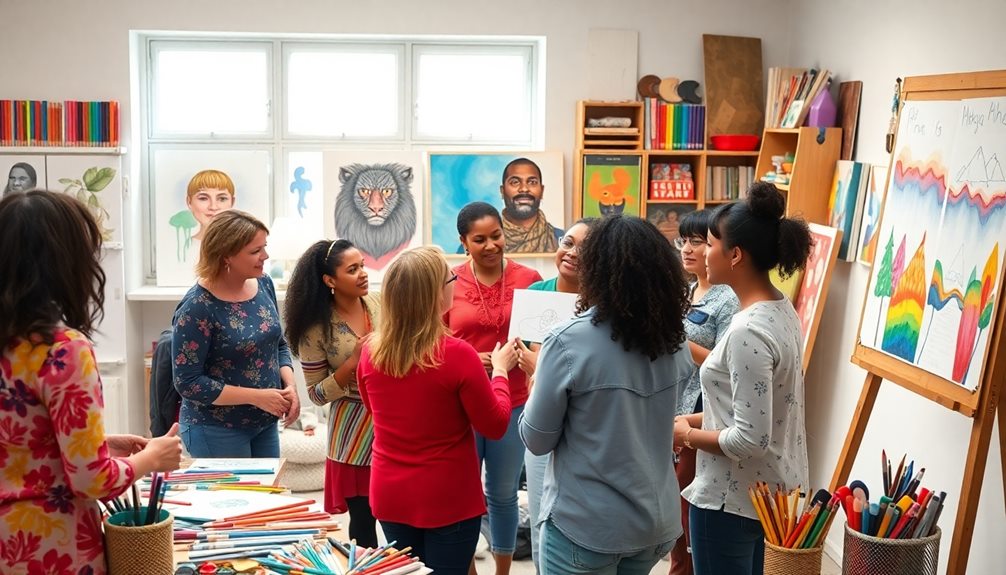
Strong proposals often emerge from collaboration and support networks that enrich the grant writing process.
When you team up with others, you bring together diverse skills and perspectives, leading to innovative and impactful project ideas.
It's essential to build these networks to enhance your proposal's quality and foster a sense of community.
Consider these elements as you engage with your support networks:
- Diverse perspectives that spark creativity
- Constructive feedback to refine your ideas
- Local business partnerships to demonstrate community support
- Networking events to connect with grantmakers and peers
- Ongoing communication with funders to nurture relationships
Managing Deadlines and Submissions
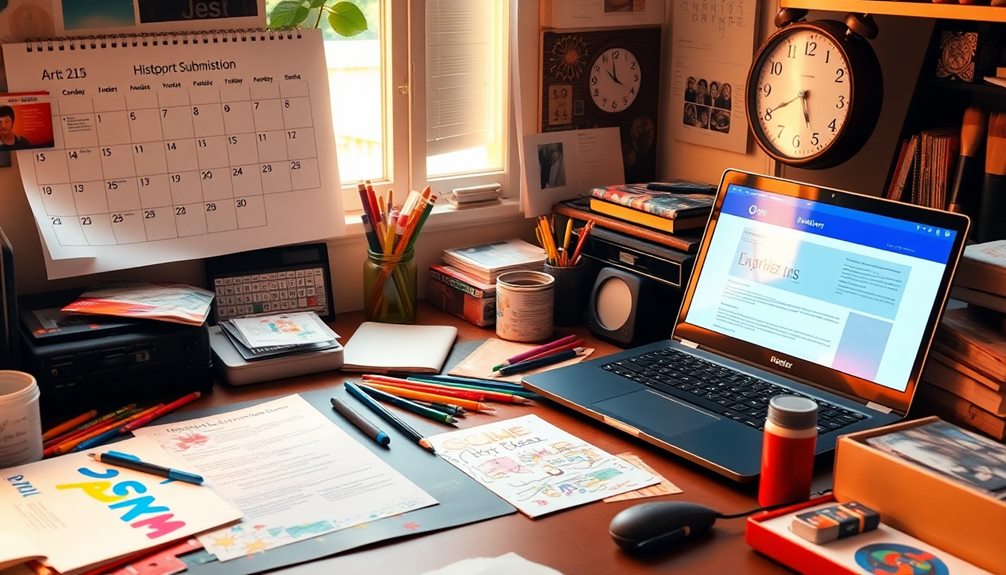
Managing deadlines and submissions can feel overwhelming, but with careful planning, you can streamline the process. Start by confirming all submission deadlines well in advance, including time zones. This guarantees your application is submitted on time and avoids last-minute issues.
Establish internal deadlines for each phase of the application process, giving yourself ample time to gather materials and draft proposals. Aim to submit your applications at least 24 hours before the official deadline. This strategy helps mitigate potential technical difficulties with online platforms, which can be unpredictable.
Creating a detailed timeline is essential. Outline all necessary steps, from research and drafting to final submission, so you have a structured approach to meeting deadlines. This timeline will keep you focused and organized.
Additionally, utilize reminders and task management tools to track important dates and monitor your progress throughout the grant writing process. By staying organized and proactive, you can effectively manage your deadlines and submissions, increasing your chances of success in securing funding for your art education projects.
Post-Award Responsibilities

Once you've successfully secured a grant, the focus shifts to post-award responsibilities that guarantee you meet your commitments.
It's crucial to stay accountable to your funders and maintain effective communication with your granting officer throughout the project. Timely submission of reports and documentation is essential to build trust and demonstrate transparency regarding your project's progress and outcomes.
Here are some key responsibilities to keep in mind:
- Acknowledge and thank your funding organization promptly after the award.
- Maintain detailed records of expenditures to track how funds are used.
- Collect data through surveys, interviews, or observations to evaluate project impact.
- Prepare specific metrics required by funding organizations for evaluating outcomes.
- Submit final reports on time to reflect the project's success and lessons learned.
Learning From Rejections
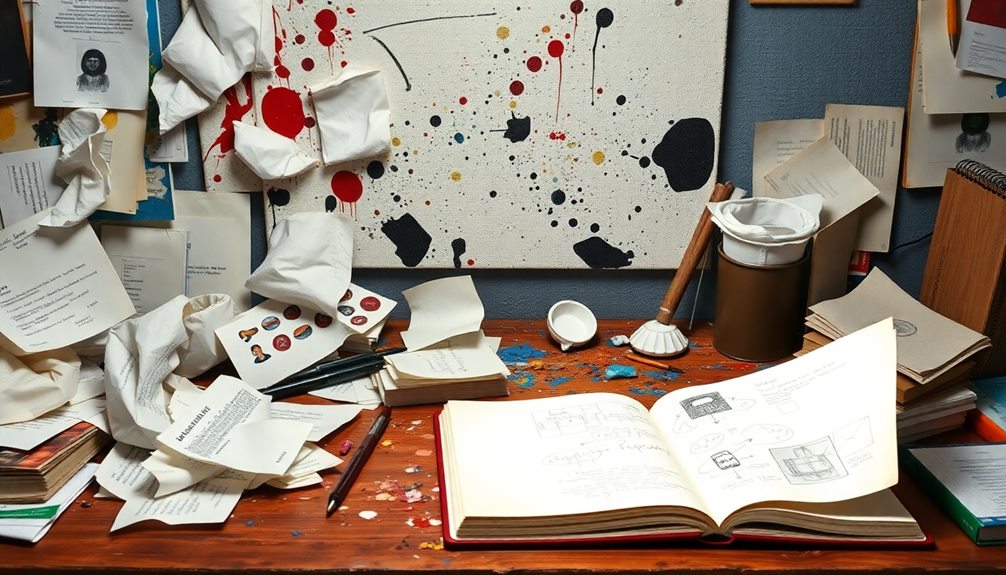
When you face a rejection, take the time to analyze the reasons behind it.
This feedback can help you refine your future applications and strengthen your proposals.
Analyze Rejection Reasons
Analyzing rejection reasons is vital for improving your future grant applications. By understanding why your proposals were turned down, you can make informed adjustments that enhance your chances of success.
Here are some key insights to reflect on:
- Alignment with funders: Verify your project details resonate with the grant's mission and priorities.
- Clear objectives: Articulate your project goals and how they benefit the community or target audience.
- Detailed narratives: Provide thorough information to paint a vivid picture of your artistic endeavor.
- Constructive feedback: Request input from funding organizations on your rejected applications to uncover specific weaknesses.
- Positive relationships: Express gratitude for the opportunity to apply, regardless of the outcome, to foster goodwill with funders.
Maintaining persistence in pursuing funding opportunities is vital. Each rejection can be a stepping stone, offering valuable insights that help refine your approach.
Implement these grant writing tips into your future applications, and don't shy away from reapplying. With every submission, you're one step closer to securing the financial support your artistic projects deserve.
Refine Future Applications
Learning from rejections offers a powerful opportunity to refine your future grant applications. When you receive a denial, don't be discouraged. Instead, request constructive feedback from the granting organizations. This feedback helps you identify areas for improvement and understand funder perspectives better.
Take time to analyze the reasons for your rejection by comparing your artist proposal against successful submissions. What did they do differently? Use these insights to enhance your project proposals, ensuring they align more closely with the funders' priorities and selection criteria.
Express gratitude for any feedback received; this keeps the door open for future collaborations. Maintaining a positive relationship with funders is essential, as they may appreciate your willingness to learn and adapt.
As you refine your approach, keep your eyes peeled for new funding opportunities. Incorporate the lessons learned from past rejections into your grant writing strategy. This illustrates growth and adaptability, qualities that funders value.
Maintain Persistence and Resilience
Facing rejection in grant writing can be disheartening, but it's essential to embrace the challenge and push forward.
Remember, every rejection is an opportunity for improvement, much like how a well-structured retirement savings plan requires adjustments over time.
Here's how you can cultivate persistence and resilience in your grant writing journey:
- Request detailed feedback from granting organizations to uncover areas for improvement.
- Analyze rejection reasons to identify common pitfalls in your proposals.
- Express gratitude for the opportunity to apply, fostering positive relationships with funders.
- Regularly revise and refine your proposals based on insights gained from past rejections.
- Develop a growth mindset, viewing rejections as stepping stones for artistic and professional development.
Strategies for Successful Funding

Steering through the world of grant funding for art education can feel intimidating, but understanding key strategies can greatly enhance your chances of success.
First, familiarize yourself with the eligibility criteria of each grant. Align your project goals with the funder's mission to avoid automatic rejection. Research previous grant recipients; this can provide insights into what types of proposals resonate with funders.
Next, craft a compelling narrative that emphasizes your project's significance and potential community impact. Make sure to convey your artistic vision clearly and passionately.
A well-prepared budget is equally important. Justify each expense, and identify additional funding sources to demonstrate both financial transparency and project feasibility.
Lastly, don't underestimate the power of relationships. Building open lines of communication with funders can lead to future funding opportunities and foster long-term support for your art education initiatives.
Attend networking events, engage in conversations, and follow up after submitting a proposal. By implementing these strategies, you'll position yourself for successful funding and create meaningful opportunities for your art education projects.
Frequently Asked Questions
How to Write a Grant for the Arts?
To write a grant for the arts, review eligibility criteria, craft a compelling narrative, develop a detailed budget, include strong supporting materials, and create a realistic timeline to showcase your project's potential impact and feasibility.
What Are the 5 R's of Grant Writing?
Did you know that 70% of grant proposals fail to secure funding? To succeed, focus on the 5 R's: Research, Relevance, Relationships, Results, and Reporting. They'll enhance your chances of writing winning proposals.
How to Write an Educational Grant?
To write an educational grant, you'll want to research funding opportunities, craft a compelling narrative, develop a detailed budget, include supporting materials, and strictly adhere to submission guidelines and deadlines. It's essential to be thorough.
How to Write a Proposal for an Art Project?
To write a proposal for an art project, define your objectives using the Who, What, Where, When, Why, and How framework. Include a budget, narrative, work samples, and a realistic timeline to support your vision.
Conclusion
In the world of art education, your passion can spark change, your ideas can inspire creativity, and your grants can make a difference. Remember, every application is a step forward, every rejection is a lesson learned, and every success is a celebration of your hard work. Embrace the journey, lean on your support networks, and keep pushing for funding that fuels your vision. With persistence and dedication, you can transform your artistic dreams into reality.
